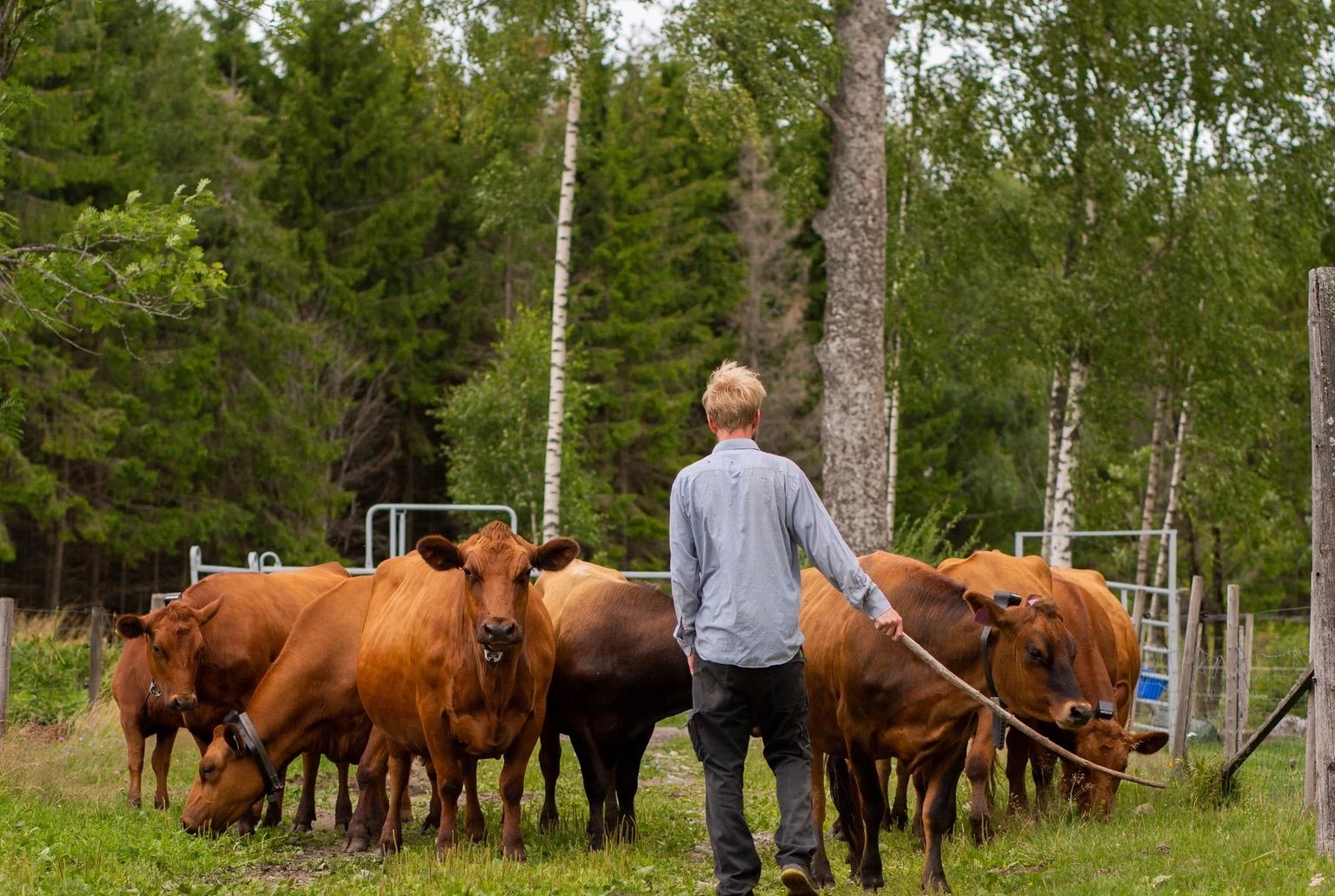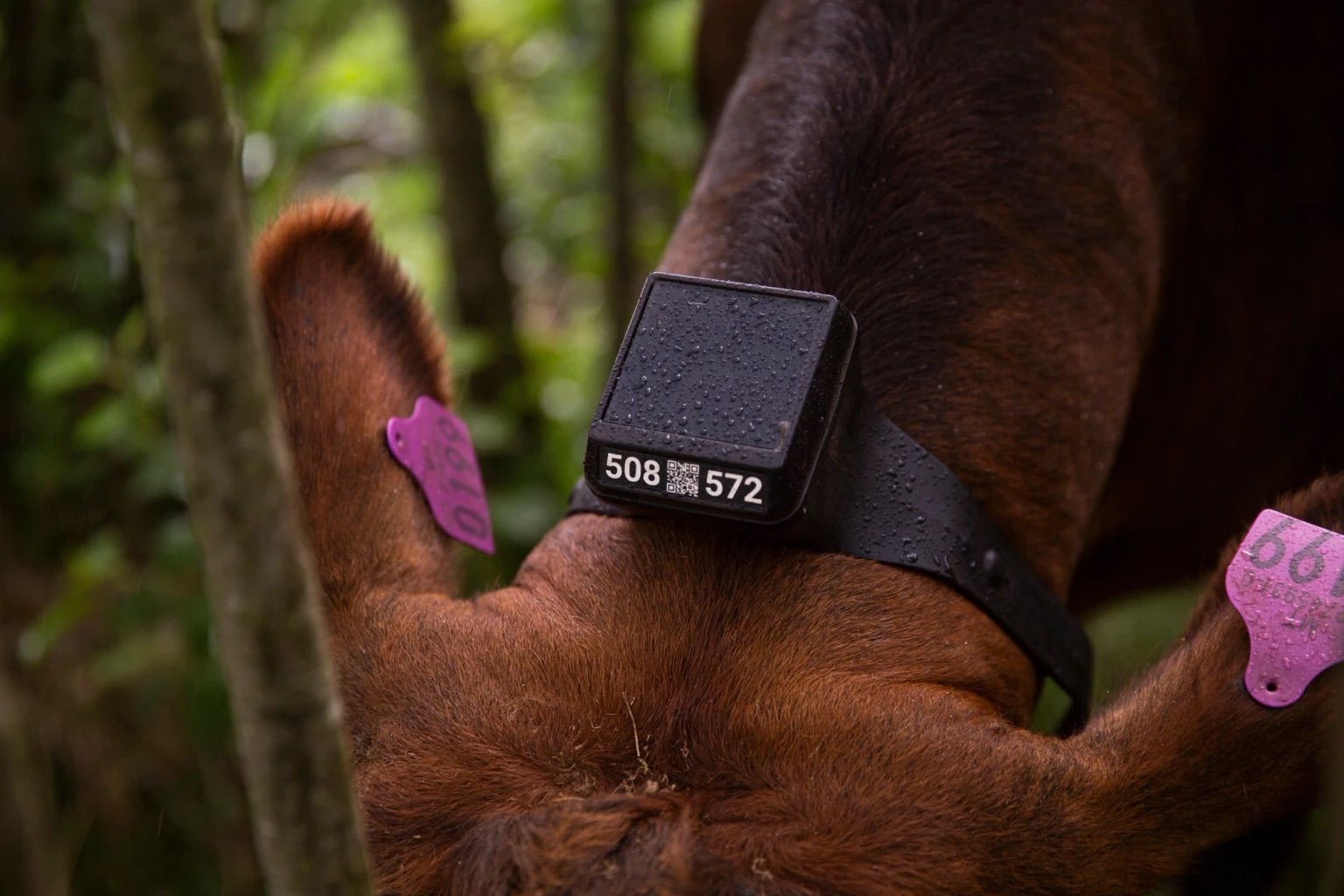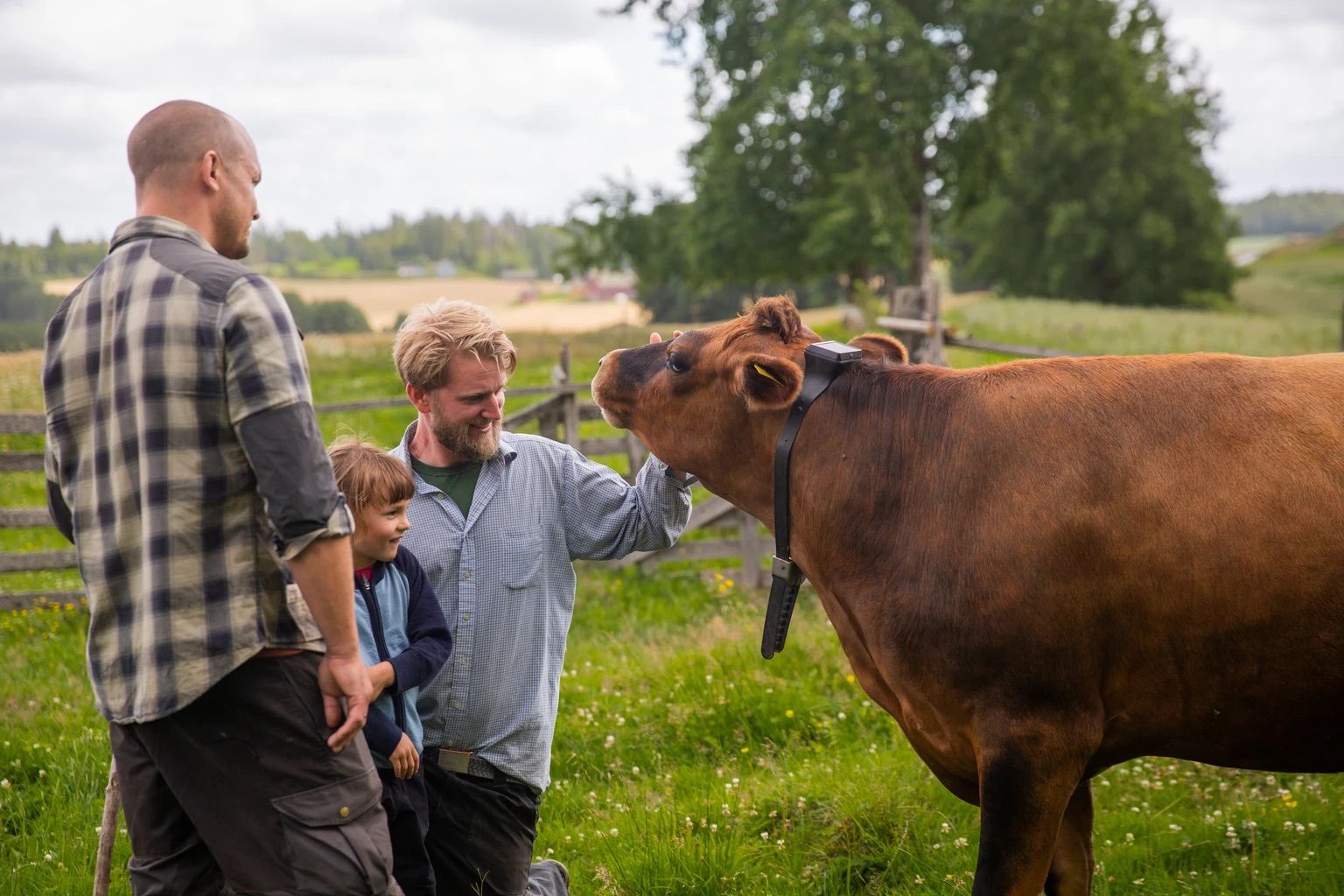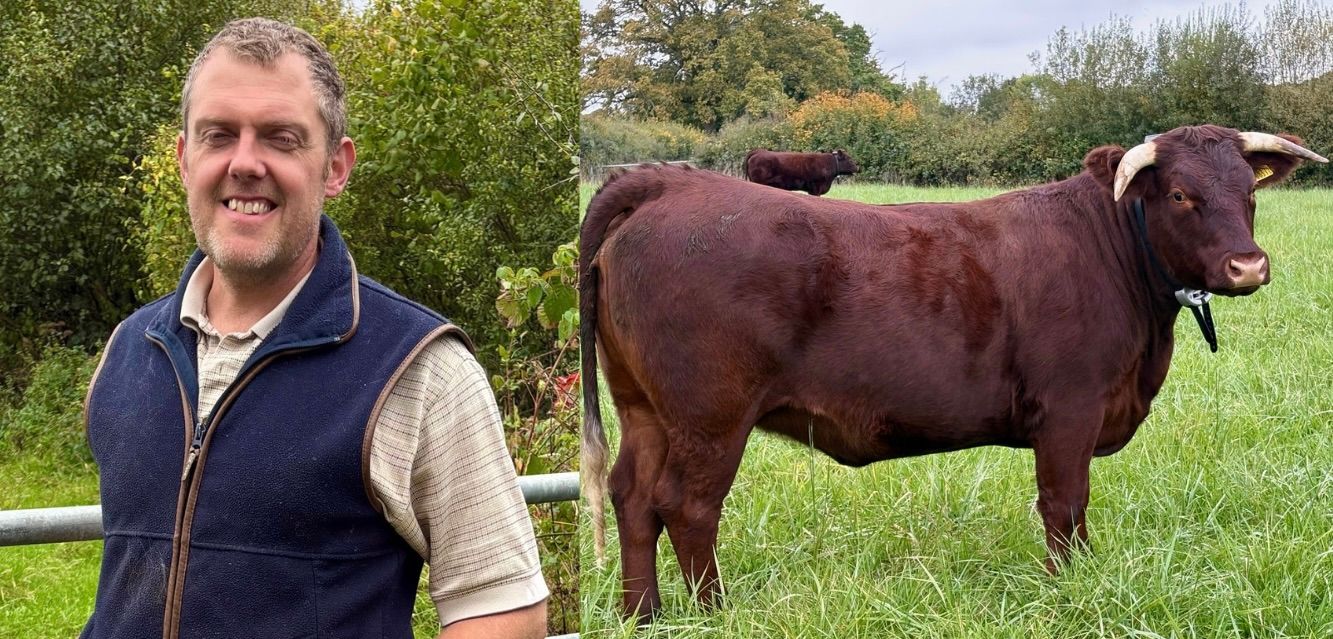The Fences of the Future: for Farmers, Livestock, and the Environment
Virtual fences are the fences of the future. With cattle collars designed to improve pasture management, ranchers can free up time and worry.


When it comes to reaching climate targets and simultaneously feeding the world's growing population, we depend on farmers, grazing livestock, and new technology.

In a comprehensive report, the Food and Agriculture Organization of the United Nations points out how achieving the UN's nutrition and sustainability goals is impossible without eggs, meat, and dairy products (FAO, 2023).
Within Norway, the hilly and varied terrain means grazing livestock could be particularly important to meeting the UN’s goals. Livestock can use large areas otherwise unsuitable as cultivated land. Additionally, grazing herds help maintain a vibrant rural environment, provide jobs, and are a local food source.
Animals help keep landscapes from overgrowth. Currently, the practice of grazing livestock needs to be more efficient and profitable for livestock producers. Although open grazing is best for the environment and the animals, the current ways of practicing this has its challenges. Some areas with rough terrain are impossible to fence in. In areas where fences are possible, traditional fences are expensive and time-consuming to set up and maintain. And despite fences, animals do escape.
Virtual fences can make livestock farming easier and more profitable. Virtual fencing gives farmers tools that make operations more efficient, which can have positive ripple effects on the animals, the environment, and Norway's degree of self-sufficiency.
Challenging traditional fences with virtual fences
Monil's virtual fences allows the animals to move freely on new pastures while, at the same time, the farmer has complete control over where the herd is. Not only does it save a lot of time on inspection, collecting, and moving animals, but also saves on maintenance and inspection of fences. The technology provides opportunities for better utilization of pasture resources, recycling former infield pastures, and potential cost savings.
The Monil cattle collar has top-mounted technology for easy access and less wear and tear. It also captures solar power and connects to satellite signals effectively, so farmers rarely, if ever, need to charge the battery during the grazing season. The design is compact and lightweight, and it sits close to the animal, tracking its movements. The data gives farmers an overview of the animal's position and indications of both behavior and well-being.

A bit like a digital shepherd
Farmers are already using Monil collars. In fact there are thousands of animals using Monil as they graze. Results show excellent core functionality and good animal welfare. When trained properly with the entire herd, the cows learn the system quickly and respond well to sound signals. These thousands of collars provide invaluable feedback, pointing out bugs and giving us ideas for continual development.

Monil’s engineers take those ideas to heart. Customers have already had their ideas implemented, and ambitions don’t stop there. Monil’s collars will simplify and improve far more aspects of livestock husbandry, such as giving farmers an overview of the animals' health, heat cycles, automating controlled grazing, and providing better insight into the animals' behavior and well-being.
Do you want to know more about how better grazing can equal better output?
Stay up-to-date on Monil's virtual fences by signing up for our newsletter.
Thinking about virtual fences?
Not sure where to begin? Fill out the form below, and Oliver from our team will get in touch with a no-strings-attached offer tailored to your farm.
[1] Contribution of terrestrial animal source food to healthy diets for improved nutrition and health outcomes, FAO 2023
This article was translated from the original Norwegian version by Rebecca Harrisson.

